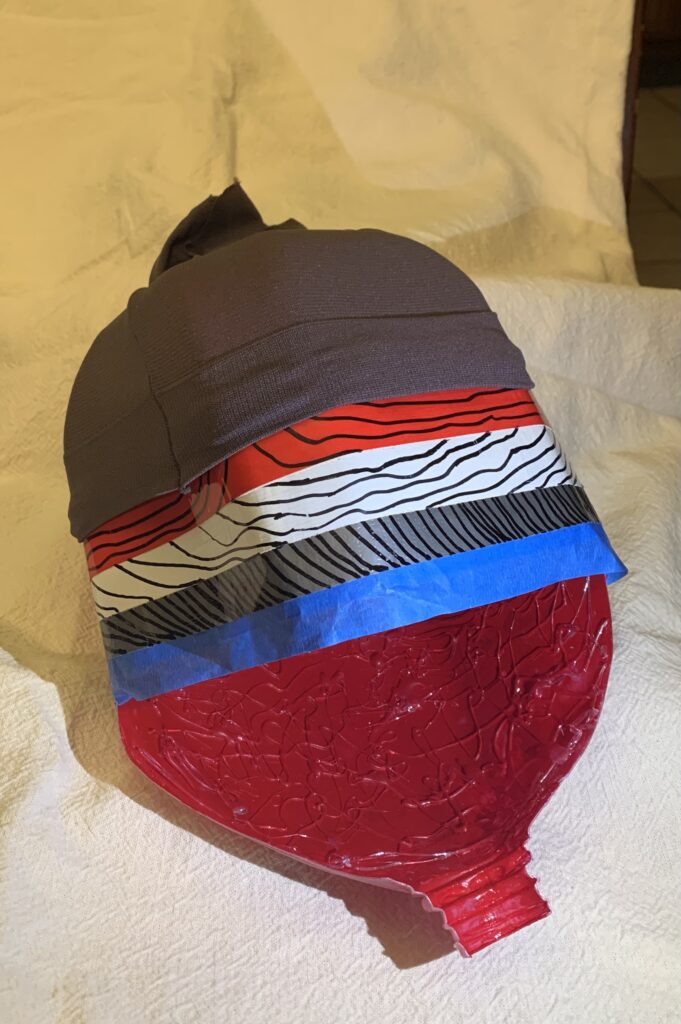

The first picture is of a healthy stomach. The second is a stomach with a stage four adenocarcinoma (the white caulking spread throughout the layers).
The first layer of the stomach is the mucosa. It is represented by the milk carton in red and the inside of the stomach has rugae (hot glue).
The second layer is the submucosa and is represented by the blue tape.
The third layer is the musculairs and is represented by the gray (oblique muscle), white (circular muscle), and red (longitudinal muscle) tape.
The fourth layer is the serosa layer and is represented by the gray pantyhose.

Alyssa found a very creative way to represent stomach cancer in her STEAM project. The use of the milk bottle and all the different media is very effective at showing the layers in the stomach. The white caulk definitely represents a haunting mass that is deteriorating the layers. Most cancers of the stomach are adenocarcinomas. This type of cancer develops from the gland cells in the mucosa, which is the innermost layer of the stomach where digestive enzymes are made. The cancer usually begins in the mucosa and spreads through the next layer , which is the submucosa, a supporting layer. Then through the muscularis propria, a thick muscle layer. Last is the subserosa and serosa, the outermost layers which wrap the stomach. The number of layers the cancer has progressed through will determine treatment, outlook, and prognosis. Adenocarcinomas tend to be slow growing and can take years to detect. Stomach cancer can be detected by an upper endoscopy, but some types of cancer can be difficult to see. Imaging such as x-rays, and CT scans, and MRI’s can be used to look for stomach cancer as well. As with all types of cancers, the sooner it is detected the better the prognosis for survival. I think Alyssa did a great job depicting a cancer that has grown through all four layers of the stomach.